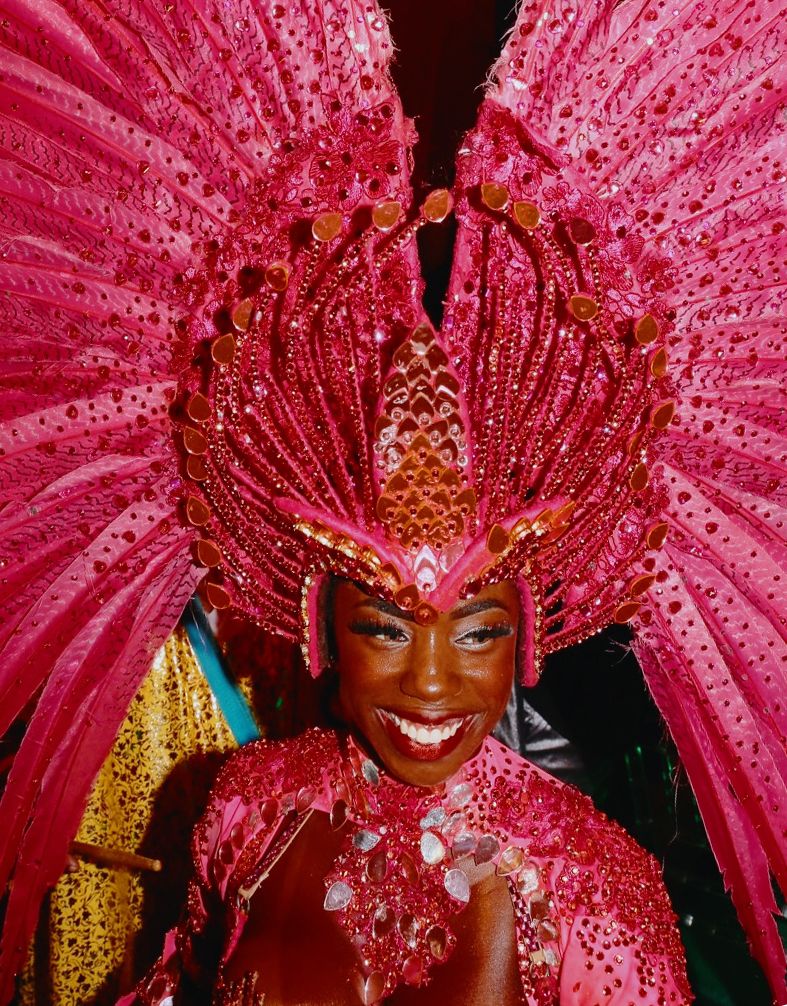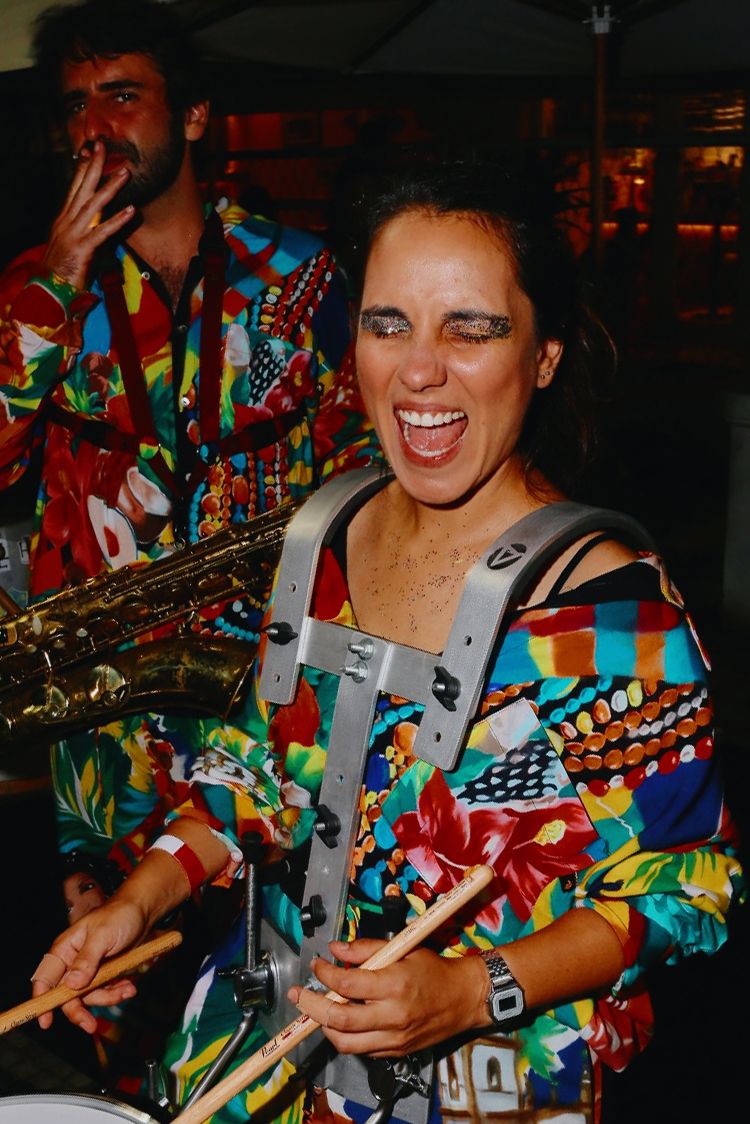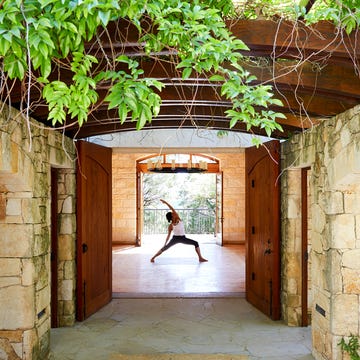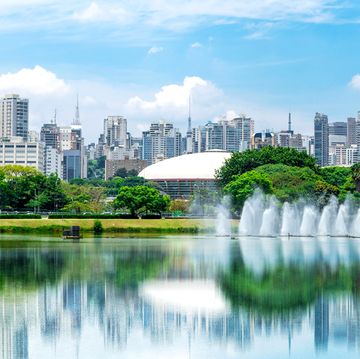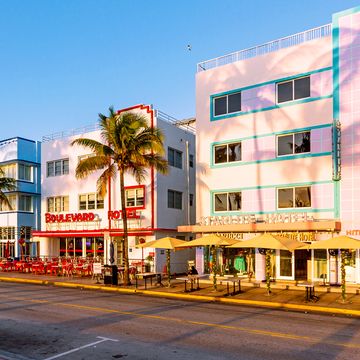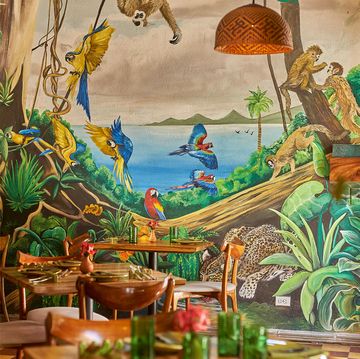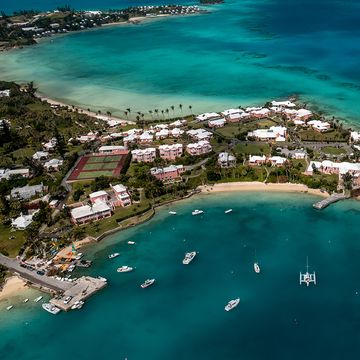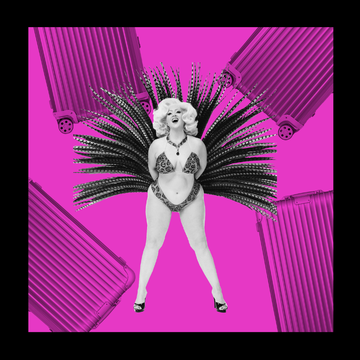In Rio de Janeiro, the birds don’t simply chirp; they also coo and sing in sweet harmony with the deep male vocals resonating from a nearby street. I peer out my hotel balcony window to follow the sounds, which have become a chorus of voices offering support through cheery whistles and claps interspersed with car horns and crashing waves. It’s 9:26 a.m. on Sunday, the morning after Rio’s highly anticipated Copacabana Baile do Copa, and the carnival celebrations have only just begun. Carnival is officially back—breakfast be damned.
A sun-drenched metropolis surrounded by a vast expanse of sand and sea, there’s no bad time to visit Rio de Janeiro. But if it’s rest and calm you’re looking for, I should warn you: late February is reserved for partying. For five days straight, millions of people flock to the bustling, South American treasure for non-stop celebrations of community, and freedom—and after a brief hiatus following the COVID pandemic—hopefulness. Although New York has long been referred to as the city that never sleeps, Rio de Janeiro doesn’t provide much chance for slowing down. Not that you’ll want to apply the breaks, especially when still riding high from the Copacabana Palace’s Baile do Copa.
It took a while for me to come down from the carnival ball clouds. I pondered the previous night while sitting streetside at Copacabana’s Restaurante Pergula, steps away from Rio’s Copacabana Beach. Tucked behind me is the hotel’s pool, shrouded by millionaires, socialites, and media dancing to a band's rhythm, getting guests pumped for the night ahead. Directly in front of me is the bustling sidewalk bordering the beach, ripe with eager, scantily-clad revelers doused in tinsel and glitter, fueled by excitement, Red Bull, and booze, presumably heading to one of the city’s blocos.
More From ELLE

To understand Rio is to know that the pulse of the carnival season is the blocos—free for all street parties that begin as early as January and intensify during carnival week—and the two-night parade held on Sunday and Monday at Sambadrome Marquês de Sapucaí, where samba schools duke it out in a competition for the champion title. Partying is the cornerstone of Brazilian culture, a spirit that translates from Rio’s underground circuits to the cobblestone steps of the luxury enclave. However, for Brazil’s elite, Carnival commences when the red carpet rolls outside of Rio’s famed Copacabana Palace, a Belmond Hotel. Like the Met Gala in the States, the Copacabana carnival ball oozes with opulence, glamour, and prestige, calling upon its guests to slip into their finest glitter and sequin black-tie attire to dance the night away alongside politicians, entrepreneurs, and influencers alike. This year’s theme was The Time Tunnel, which took attendees on a whirlwind ride through the Palace’s 1920s opening as it looks another 100 years ahead. Seldom will you find a hotel with a track record as solid as Copacabana Palace.
Copacabana Palace swung its doors open in the 1920s, overlooking Rio’s iconic Copacabana Beach. The dusty-white edifice is steeped in luxury without feeling stuffy; its 1920s veneer melds with retro glamour, reeling guests in with its art deco walls, cozy French-inspired rooms with city and beach views, Michelin-starred restaurants, and relaxing spa that lend a helping hand when the party’s over.
“Since it was founded in 1923, the Copacabana Palace has always been able to adapt to different times, different fashions, and different trends. And we are here in 2023 and [the hotel] is as strong as ever. That’s what we are celebrating with our Carnival Ball. So we’re reflecting 100 years back, and celebrating another 100 years forward. The main thing is that we were always adaptable,” says Ulisses Marreiros, general manager at Copacabana Palace.
Each neck of the hotel’s second-floor “time tunnel” was a melange of pop art deco with nods to Andy Warhol and Alice in Wonderland. A crystallized chandelier was surrounded by a king, queen, and jester playing cards; in one corner, a hologram of famous Brazilian singer Carmen Miranda dancing amped partygoers for the night’s entertainment. Thousands of dollars were spent on each seat at a table but bodies barely warmed them as guests crowded the dance floor to show off their best samba moves. Popular street band Cordao de Bola Preta provided the soundtrack for the night, with melodies built around pounding drums and glitzy saxophones. DJ sets were peppered throughout the sprawling space. Whether you know how to samba or not, no corner of the main ballroom was left untouched at Baile do Copa, as the crowd swayed their hips to the folky bossa nova beats.
“There is a feeling of community here—real community,” Marreiros says of Copacabana’s guests. “Yes, it creates a little bit of a club feeling sometimes because a lot of people know each other, but for the ones that don’t, we ensure they’re embraced by all the other guests,” he adds, be it through live entertainment around the pool for attendees to enjoy together during the day, or the all-night baile carnival ball that meets the first bird chirp in the morning.
“We have like 6 million citizens [in Rio]. During the pandemic days, it was tough and emotional for a lot of people. That’s why this year, everybody wants to come out and enjoy life because Carnival is very special. It’s an experience,” he adds.
Abundance is the word that best describes the essence of Rio’s carnival season—an abundance of flamboyance, energy, and of course, beauty. If you thought Euphoria pioneered hazy, sparkling gem-encrusted makeup, surely you haven’t stepped foot on Carnival grounds.
It starts in the eyes. “The eyes command the creativity,” reveals Athena Sparks, Rio-based makeup artist, and frequent Copacabana’s ball attendee. Sparks was entrusted to create the Copa Ball look for Brazilian actress Pricsila Vaz and created a sharp, rhinestones-winged liner with fluffy, lashes. Then, the focus shifts to creating a perfect canvas with a primer as “it creates a film between the face and products that will [sit on] the face, this way making every layer kind of “glue” together,” Sparks adds. The actress’ base was refined by Milk Makeup’s Hydrogrip Primer, along with a mix of foundations—including Kohll Beauty’s Base Blindada and Pat McGrath’s Sublime Fetish Foundation—and set with Bruna Tavares Skin Powder to keep everything intact as Vaz danced the night away.
“Carnival is a festival of freedom and joy and there are many ways to celebrate Carnival, [especially through] makeup according to your celebration choice. In the case of the street carnival, usually opt for something lighter. For [Marquês de] Sapucaí, expects to wear heavier makeup because it has to be seen from afar in the parade. In both occasions, “carioca” carnival makeup consists of extremely resistant, very illuminated skin, high durability, a lot of highlighter, glitter, and rhinestones,” Sparks explains.
Waltzing around the room at the Copa Ball, there was something refreshingly optimistic about seeing nearly every attendee interpret Carnival beauty in their own way. Women accentuated their costume gowns with rhinestones and shimmering speckles on and around their eyes. Perhaps even more affirming was seeing how men subtly enhanced their tuxedo looks with swipes of dark silver and black glitter across their lids. In the States, the stigma around makeup for men has slowly begun to shed, but it seems as if Brazil has always been ahead of the curve. During Carnival, makeup is commonplace, not a disruptive gesture or a grand rejection of outmoded societal norms. “There is no right or wrong anything at Carnival—everything can be done and [nothing] is ever too much. Above all, Carnival is about being comfortable with who you are, and adapting your makeup to fit your personality, [whether you’re] the causal one, the fun one, or the more classy one,” Sparks says.
Moreover, Carnival rejects perfectionism, inviting young and old, wealthy and working-class, and foreigners and natives front-row seats to celebrate individuality, creativity, and freedom with fervor. There isn’t a worry or concern too big that Rio can’t shake, even if for a few hours. It’s why Copacabana Palace remains a safe haven for those exhausted by the aches of everyday life.
“The people from Rio de Janeiro have a very positive energy. Even through the tough times and rough lives, people see it, people feel it, and people embrace that positivity. Rio teaches you to always see always the positive side of things,” Marrieros adds.
Baile and samba beats make up much of Rio’s allure, but the true beauty lies in youthful exuberance that doesn’t wear off long after you’ve landed at NYC’s John F. Kennedy airport.
When life starts to feel mundane, there's one place you can always turn to for excitement and inspiration: the land of beauty and rhythm.
Nerisha is the beauty commerce editor at ELLE.com, covering all things beauty (and fashion and music). She has a penchant for sneakers and nude lip glosses, and spends way too much time re-watching 90s sitcoms.
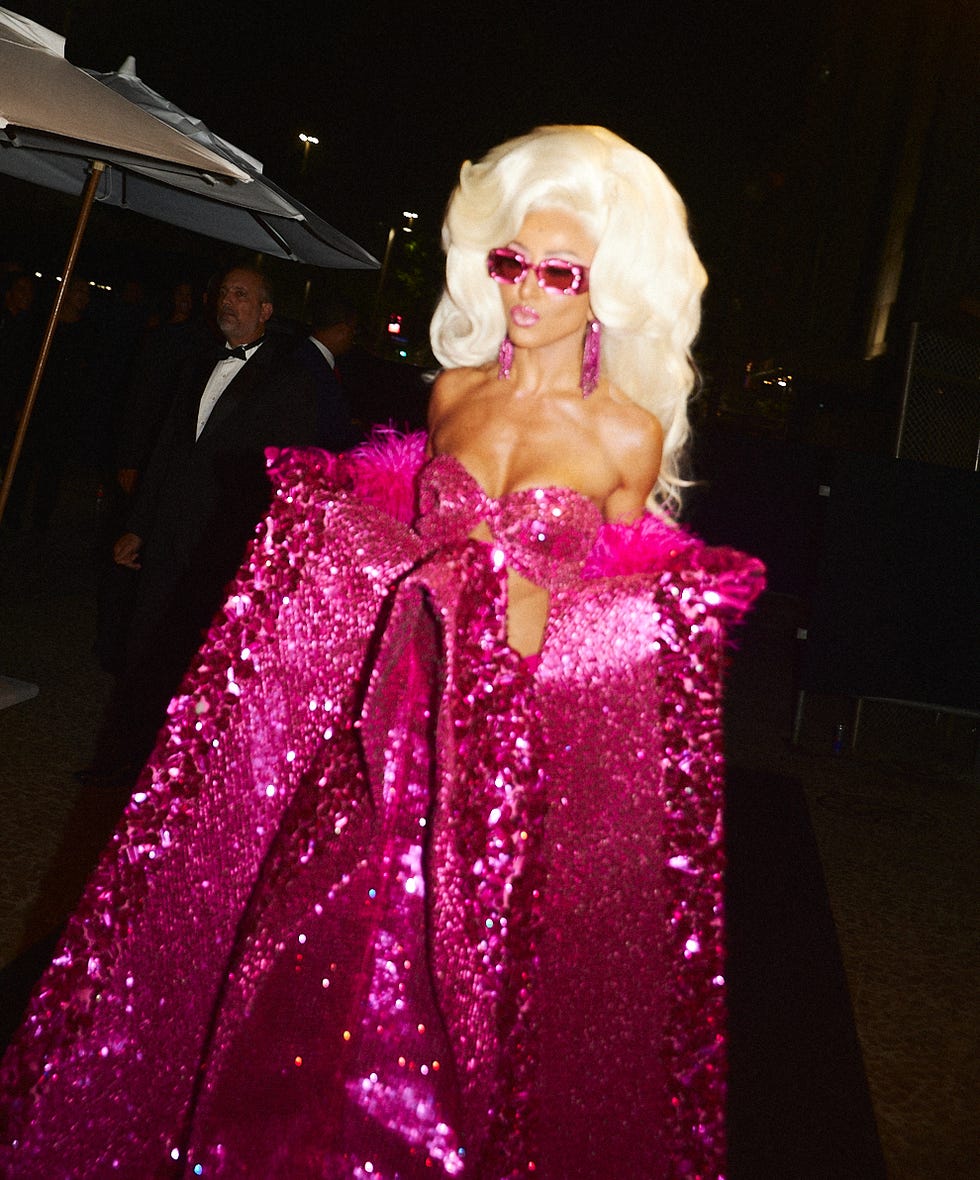
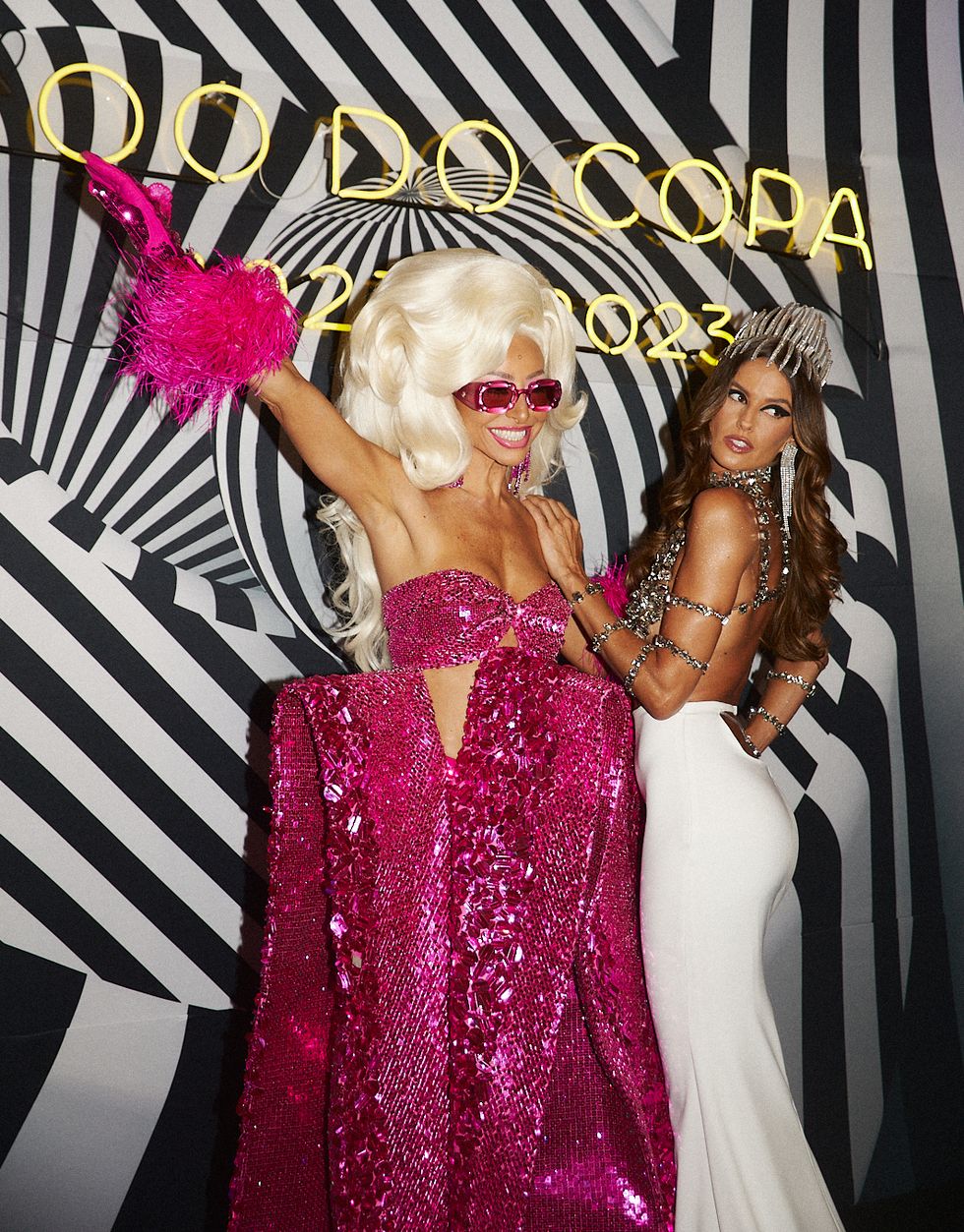
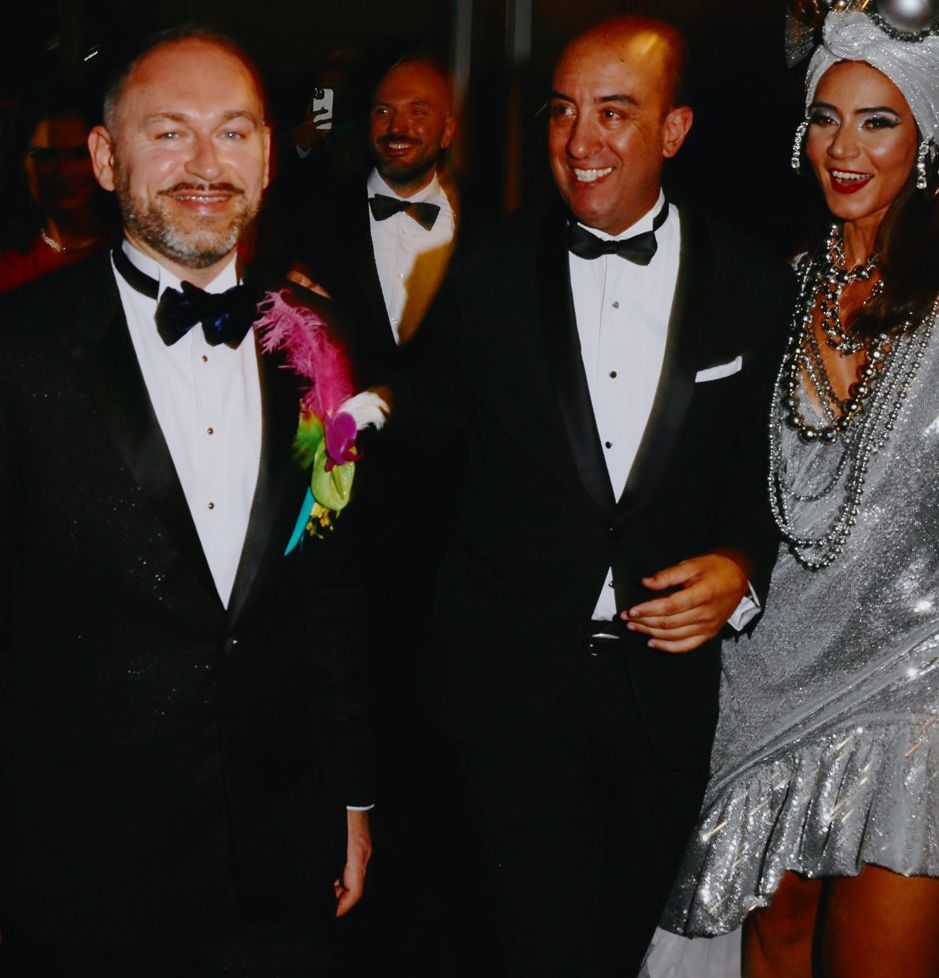


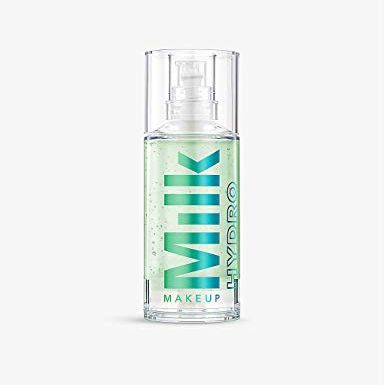
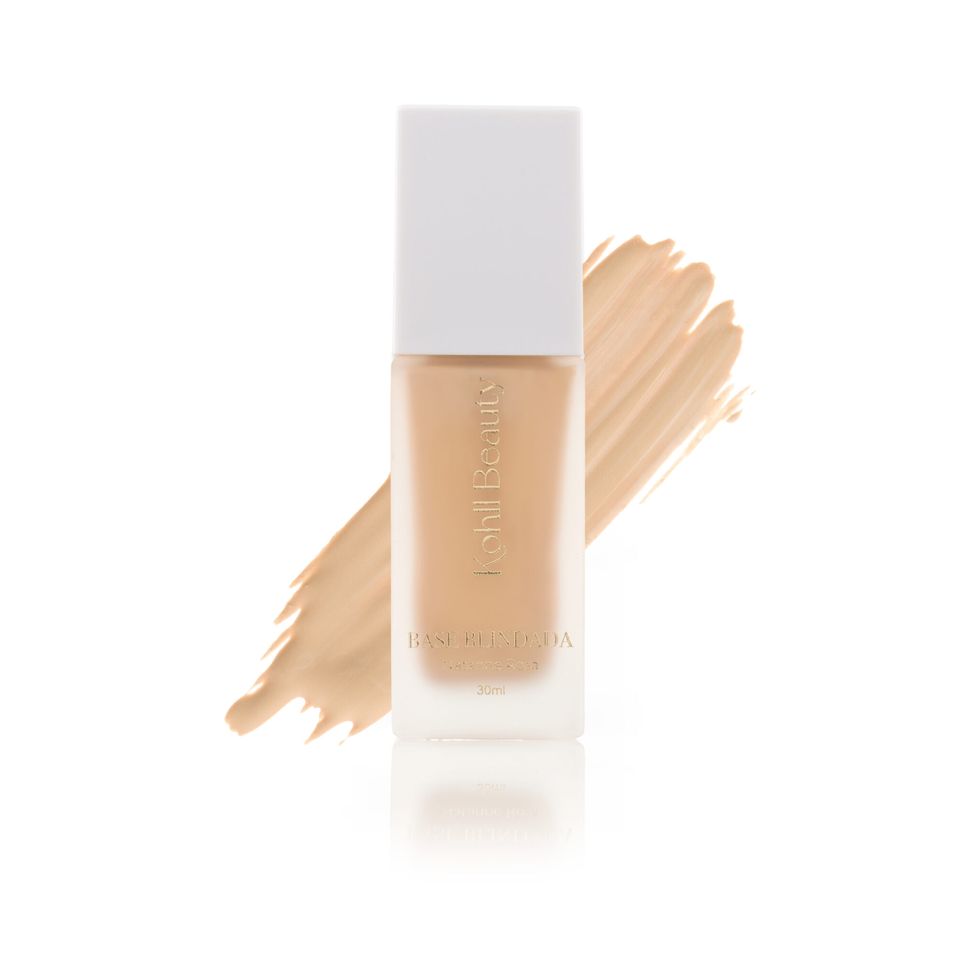
![Sublime Perfection Foundation [variation_tag_finish:Radiant] Sublime Perfection Foundation [variation_tag_finish:Radiant]](https://hips.hearstapps.com/vader-prod.s3.amazonaws.com/1679666950-screen-shot-2023-03-24-at-10-08-53-am-641daf0042b5f.png?crop=1xw:1xh;center,top&resize=980:*)
